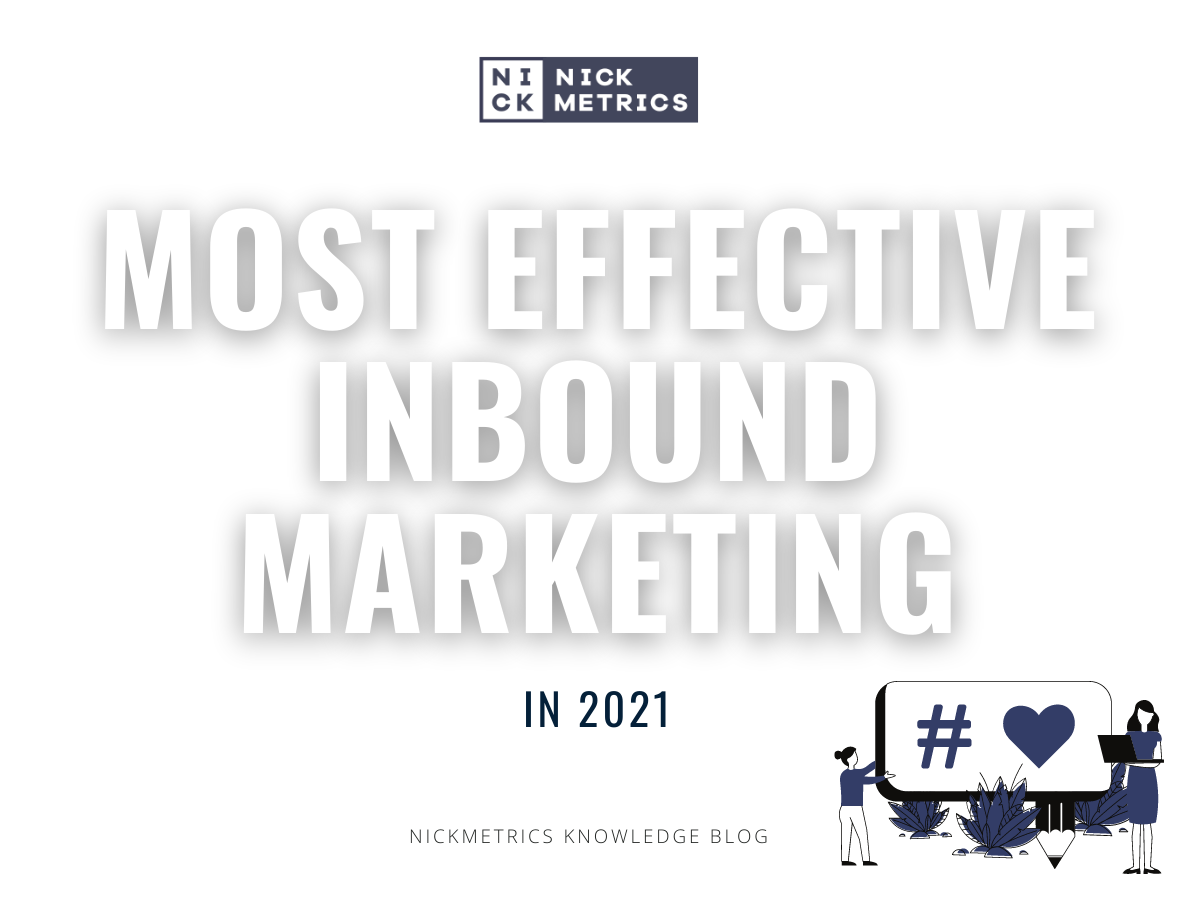
ENTER YOUR EMAIL ADDRESS
Follow Us

Marketing has been a part of life since the first human-to-human interaction. From the barter system to the modern business process, marketers have always tried to find innovative ways to spread their message and persuade people to buy their products or services.
Inbound Marketing is an effective way to engage with potential customers throughout their journey from awareness through demand generation and nurturing them as they move between stages. It results in quality leads who are more likely to convert into sales, resulting in a higher return on investment (ROI). It also helps reduce pressure on customer support teams by providing self-service tools that answer frequently asked questions and provide instructions for completing tasks online. According to a report by Hubspot, the number of marketers using inbound marketing strategies has increased from 19% to 54% over the last year. It is estimated that in 2021, Inbound Marketing will be used by 72% of B2B and 74% of B2C companies. According to a report published in the Search Engine Journal, Inbound Marketing can produce up to 30 times more leads at a fraction of the cost per lead compared with outbound tactics. This article will explain how Inbound Marketing compares with other forms of Digital Marketing and discuss how to get started. By implementing an effective Inbound strategy for your business, you’ll have a lot more visitors to your website, which will result in better returns on your marketing investment.
Inbound Marketing is a strategy that moves potential customers from being unaware of your company or product to taking action and becoming a customer through the power of online content. It’s a process that provides value to those interested in what you offer by delivering help. Content includes educational webinars, e-books, explainer videos, and more. A lot of this content is on your website or blog platform and social media pages such as Facebook and Twitter. To raise awareness for this valuable information, you should promote it across various platforms so more people will find it and visit your site, which will lead to more conversions and sales. People who turn to inbound marketing strategies have a lower bounce rate than those using outbound methods. The inbound approach focuses on prospects and customers instead of interrupting them with ads or sponsored content in social media feeds. Instead, it provides information that draws people to your website by targeting relevant keywords based on their interests. Once visitors arrive at your site, they’re greeted with clear calls-to-action (CTA) that encourage them to follow through with taking the next step(s). It could be filling out a form for access to an offer, providing their email address for further information, or signing up for a webinar about the products and services you offer.
Inbound Marketing is a highly-focused approach that delivers outstanding results when properly executed. To get started, read about each step below:
Your homepage should provide visitors with answers to questions like who you are and the value you offer. It should be made accessible for people to contact your company by providing details such as an email address or phone number in this section of your site. More importantly, the content on your homepage should include frequently asked questions (FAQs), which will answer inquiries that visitors may have when they arrive at your website. Providing FAQs is like having a front desk person available 24/7 to help with customer concerns.
Once you’ve created an effective content plan for your website, it’s time to get started with creating the actual content. The type of web pages you make should be based on your target market’s interest. For instance, if you sell software that organizes companies’ processes and workflows, creating helpful tutorials will benefit visitors. These could include how-to guides, checklists, and templates to make working within their business more efficient.
As mentioned earlier, promoting valuable information across various platforms will help draw people to your site with the help of Search Engine Optimization and Social Media Marketing. When you share your location on social media, it’s essential to use the right hashtags to index your content for people looking for what you offer. For instance, if you have a restaurant specializing in gourmet burgers, then using #burgers will help generate awareness for this information.
So many companies are now switching to inbound marketing due to its effectiveness. Not only will it help attract prospects and build relationships, but it also helps retain current customers and generate new leads.
Everyone wins!
So if you’re ready to start seeing more qualified prospects at the top of your sales funnel, click below for a free strategy session. We’d love to chat about how we can improve your online presence through this process so you can have an easier time converting visitors into buyers or clients.
Tags: Content Marketing, Inbound Marketing, Lead Generation, Marketing Strategies, Sales Funnel, Search Engine Optimization, Social Media Marketing, Web Content